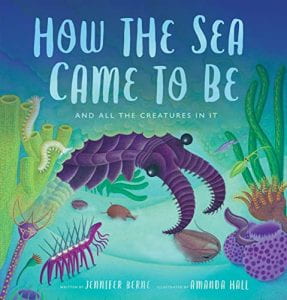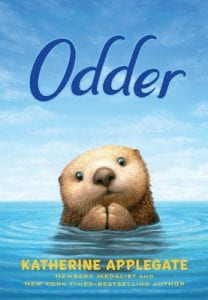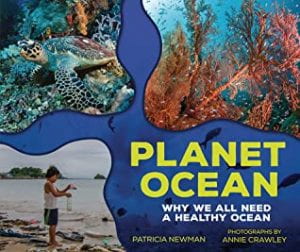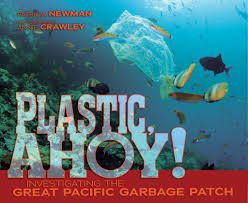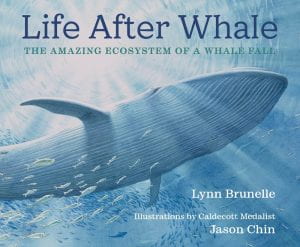 Brunelle, Lynn. Life After Whale: The Amazing Ecosystem of a Whale Fall. Illustrated by Jason Chin. Neal Porter Books, 2024. 978-0-823-45228-6. Unpaged. $18.99. Grades K-2.
Brunelle, Lynn. Life After Whale: The Amazing Ecosystem of a Whale Fall. Illustrated by Jason Chin. Neal Porter Books, 2024. 978-0-823-45228-6. Unpaged. $18.99. Grades K-2.
The blue whale is the largest animal on earth, and when one dies it creates an entirely new ecosystem called a “whale fall.” The whale’s body can take more than a month to reach the ocean floor, six thousand feet below the surface. There, the first of four overlapping phases begins. In the “mobile scavenger phase,” hagfish and other hungry scavengers consume much of the whale’s remains, leaving only the skeleton behind. (Some squeamish readers may turn away from illustrations that show these scavengers devouring the whale’s muscle and fat, but most will lean in to learn even more.) The mobile scavenger phase takes years and leads into the enrichment opportunist, sulfophilic, and reef phases. In total, these phases can last for over one hundred and fifty years, supporting a “cascade of new life.” They also support the cyclical food chain that provides nourishment for a new generation of blue whales. This utterly fascinating, STEM-friendly work of art explores a phenomenon that has always existed, but was not well understood by scientists until technology made deep-sea exploration possible. Jason Chin’s watercolor and gouache illustrations depict mostly underwater scenes, from the sunny shallows to the dark depths of the North Pacific Ocean, and portray the majestic blue whale in both life and death.
THOUGHTS: Readers of Life After Whale will be thirsty for even more information about the unique ecosystem of a whale fall!
577 Whales

